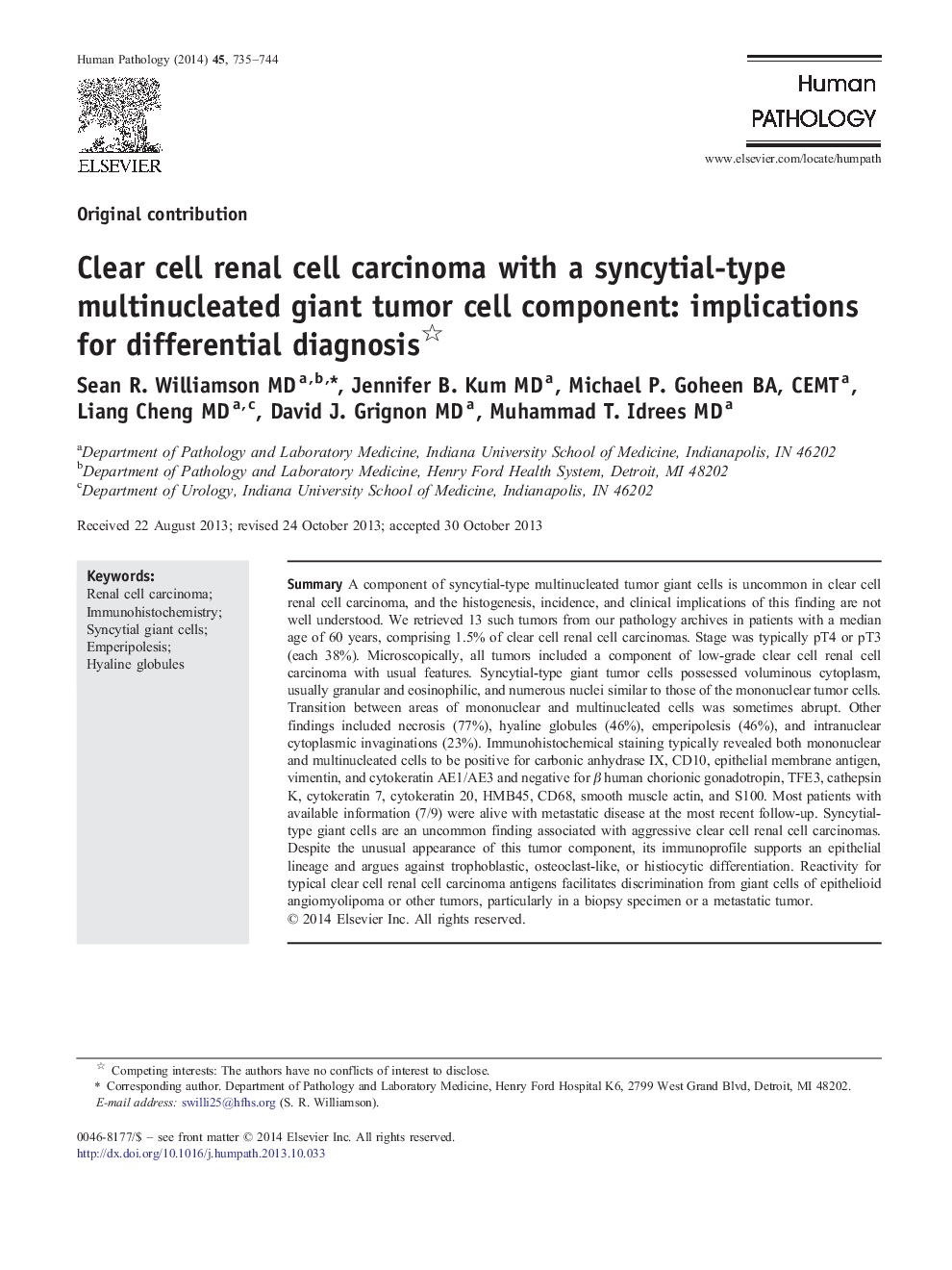| کد مقاله | کد نشریه | سال انتشار | مقاله انگلیسی | نسخه تمام متن |
|---|---|---|---|---|
| 4132982 | 1271405 | 2014 | 10 صفحه PDF | دانلود رایگان |

SummaryA component of syncytial-type multinucleated tumor giant cells is uncommon in clear cell renal cell carcinoma, and the histogenesis, incidence, and clinical implications of this finding are not well understood. We retrieved 13 such tumors from our pathology archives in patients with a median age of 60 years, comprising 1.5% of clear cell renal cell carcinomas. Stage was typically pT4 or pT3 (each 38%). Microscopically, all tumors included a component of low-grade clear cell renal cell carcinoma with usual features. Syncytial-type giant tumor cells possessed voluminous cytoplasm, usually granular and eosinophilic, and numerous nuclei similar to those of the mononuclear tumor cells. Transition between areas of mononuclear and multinucleated cells was sometimes abrupt. Other findings included necrosis (77%), hyaline globules (46%), emperipolesis (46%), and intranuclear cytoplasmic invaginations (23%). Immunohistochemical staining typically revealed both mononuclear and multinucleated cells to be positive for carbonic anhydrase IX, CD10, epithelial membrane antigen, vimentin, and cytokeratin AE1/AE3 and negative for β human chorionic gonadotropin, TFE3, cathepsin K, cytokeratin 7, cytokeratin 20, HMB45, CD68, smooth muscle actin, and S100. Most patients with available information (7/9) were alive with metastatic disease at the most recent follow-up. Syncytial-type giant cells are an uncommon finding associated with aggressive clear cell renal cell carcinomas. Despite the unusual appearance of this tumor component, its immunoprofile supports an epithelial lineage and argues against trophoblastic, osteoclast-like, or histiocytic differentiation. Reactivity for typical clear cell renal cell carcinoma antigens facilitates discrimination from giant cells of epithelioid angiomyolipoma or other tumors, particularly in a biopsy specimen or a metastatic tumor.
Journal: Human Pathology - Volume 45, Issue 4, April 2014, Pages 735–744